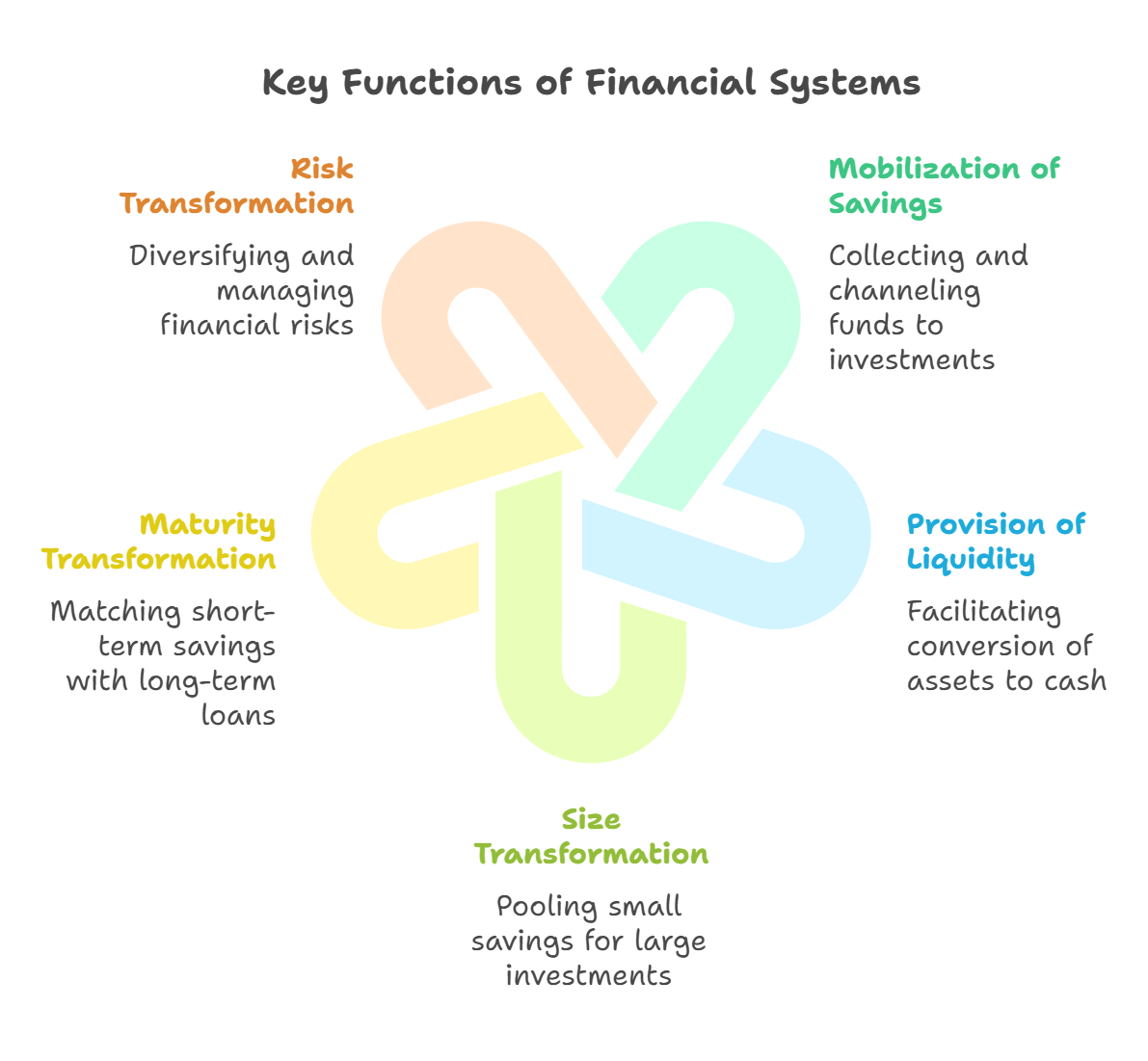Functions of Financial System
Key Functions of the Financial System
The financial system plays a crucial role in the economy by performing several key functions:
1. Mobilization of Savings:
- Collecting funds from savers: Financial institutions, such as banks, collect savings from individuals and businesses through deposits, investments, and insurance premiums.
-
Channeling funds to productive uses: These collected funds are then channeled towards productive investments, such as:
- Business loans: Supporting business expansion and job creation.
- Home mortgages: Enabling individuals to purchase homes.
- Infrastructure projects: Funding the development of roads, bridges, and other essential infrastructure.
2. Provision of Liquidity:
- Facilitating easy conversion of assets into cash: The financial system provides mechanisms for individuals and businesses to quickly convert their assets into cash when needed.
-
Examples:
- Checking and savings accounts: Offer easy access to funds.
- Stock markets: Provide a platform for buying and selling stocks, allowing investors to quickly convert their investments into cash.
3. Size Transformation (Capital Formation):
- Pooling small savings into large investments: Financial institutions pool small savings from many individuals into larger amounts, enabling them to finance large projects that would otherwise be inaccessible.
- Example: Banks collect deposits from many individuals and then lend those funds to businesses for expansion.
4. Maturity Transformation:
- Matching short-term savings with long-term investments: Financial institutions accept short-term deposits (like checking accounts) and use them to fund long-term investments (like mortgages).
- Example: Banks accept short-term deposits and use them to provide long-term loans to borrowers for home purchases.
5. Risk Transformation:
- Diversifying and managing risk: Financial institutions help individuals and businesses manage and diversify their risks.
-
Examples:
- Insurance: Protects individuals and businesses from unforeseen events like accidents, natural disasters, and legal liabilities.
- Diversified investment portfolios: Allow investors to spread their risk across different assets.
These functions are interconnected and essential for the efficient functioning of the economy. By mobilizing savings, providing liquidity, and managing risk, the financial system supports economic growth, promotes innovation, and improves the overall well-being of individuals and businesses.
Key Functions of Financial Systems
Risk Transformation
Mobilization of Savings
Diversifying and managing financial risks
Collecting and channeling funds to investments
Maturity Transformation
Provision of Liquidity
Matching short-term savings with long-term loans
Facilitating conversion of assets to cash
Size Transformation
Pooling small savings for large investments

No Comments